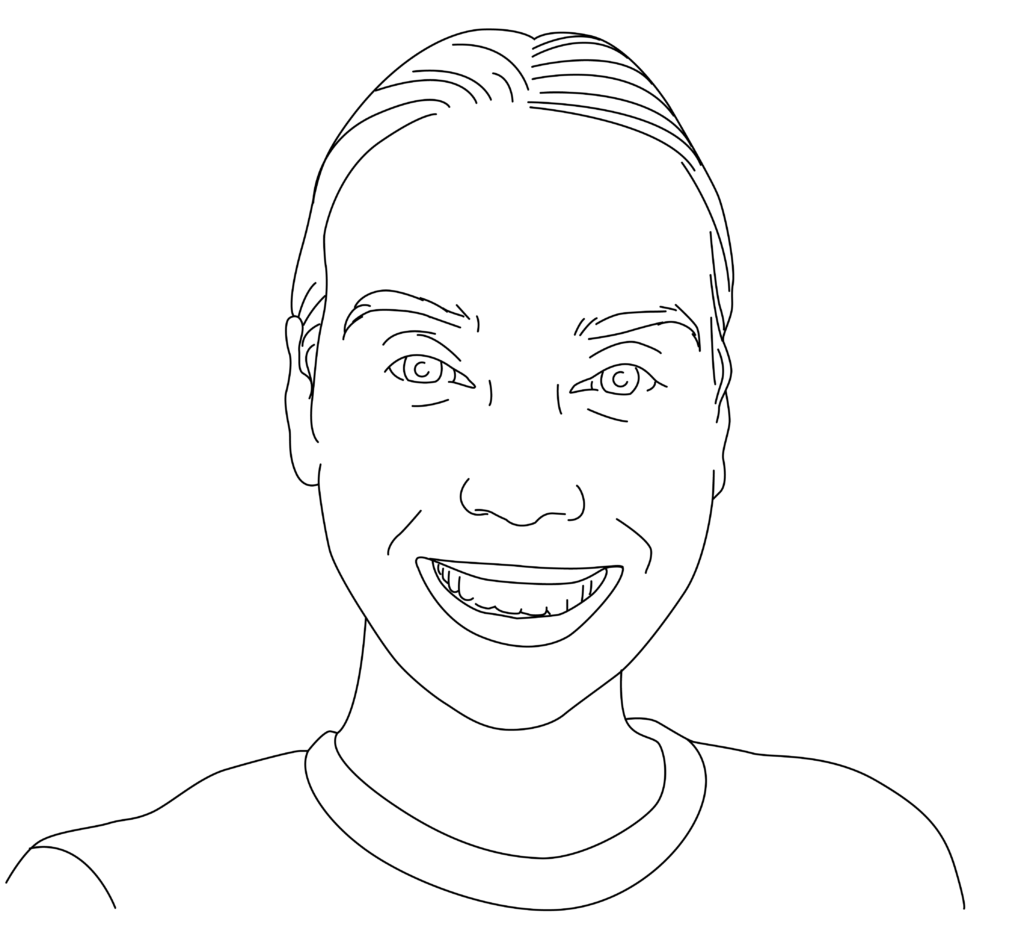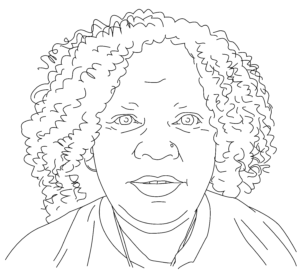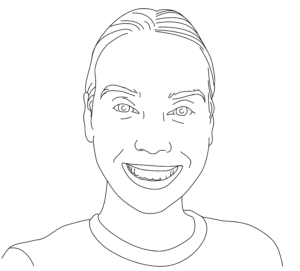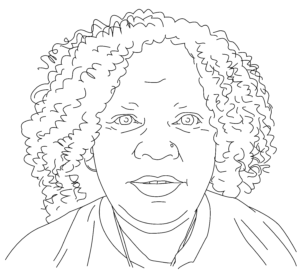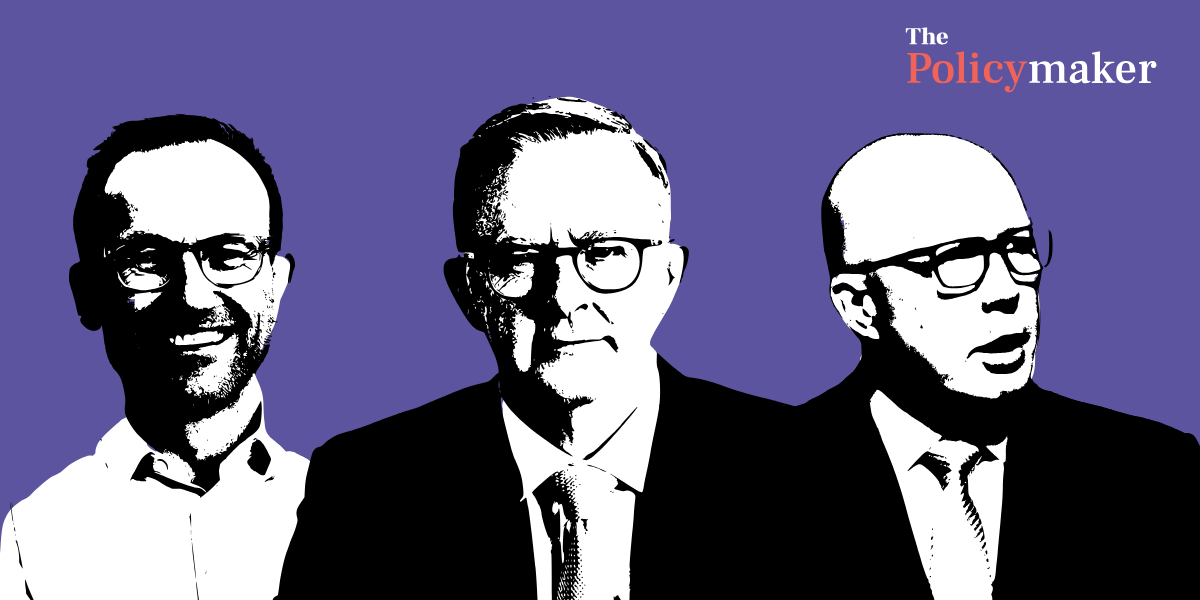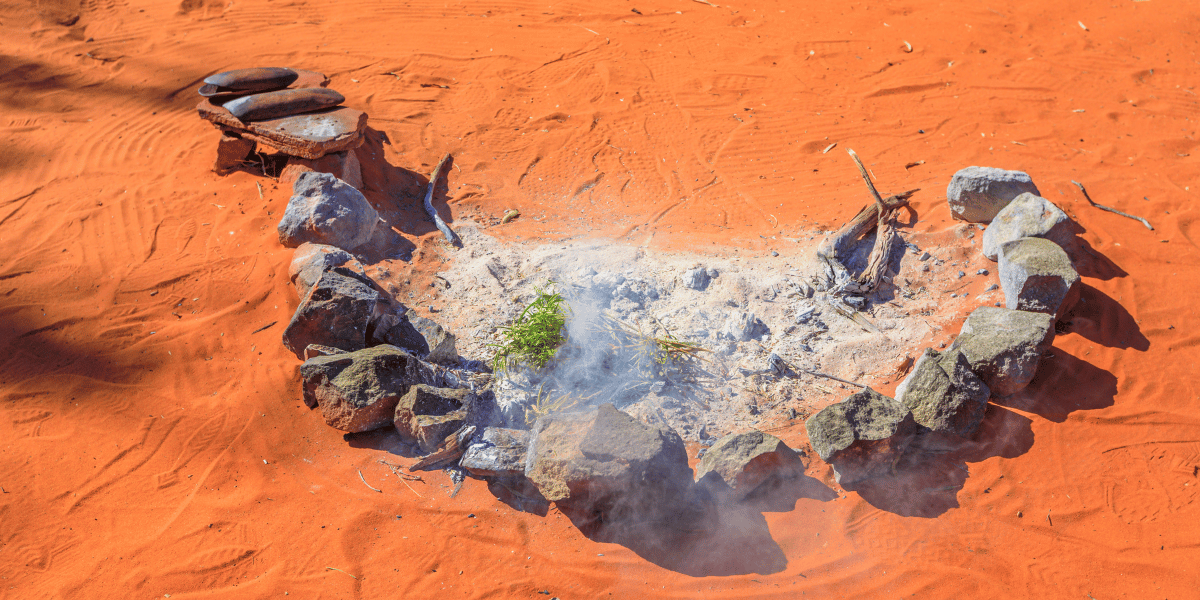
28 April 2023
Sharee’s home sits at the edge of the vast Warlpiri language “triangle”. Her Central Desert community as it exists today – a remote township of 250 people placed on striking ochre earth – has been there since the 1970s.
But that’s a speck in time: her people have been there and have spoken Warlpiri for more than 60,000 years.
Sharee (not her real name) is fluent speaking Warlpiri and competent in English. She can also converse in other First Nations languages commonly spoken on her Country. But four years ago, she could read and write none of them. Then, when World Vision staff first met her, Sharee’s school attendance was patchy. The 7-year-old – much like her grandmother who cared for her – was quiet and lacked confidence.
Sharee’s grandmother learned to read and write Warlpiri, through a community-driven program supported by World Vision’s Strong Spirit approach. It prompted Sharee to learn, too. Grandmother and granddaughter grew together, bonded by the strength of kin and enthused through their common language – two of the five Strong Spirit domains that underpin World Vision work in First Nations communities.
Strong Spirit is the backbone of Aboriginal ways of working, doing and being.
It allows us, as First Nations peoples, to stand up straight and walk in the right direction.
Through it we can change the narrative for individuals and their communities.
When World Vision works alongside First Nations communities, First Nations peoples are in the driver's seat. They determine the direction they take on issues that matter to them, their futures and the sustainability of their community. Sometimes communities contribute their own funding to the work.
Although almost two-thirds of the World Vision staff working in First Nations communities are Aboriginal or Torres Strait Islander people – and, in most of those cases, are from the communities themselves – this alone won’t guarantee progress and success with community projects.
So Strong Spirit informs everything we do. Spirituality is the thread that draws together these elements of Language, Land, Law, Kinship and Ceremony.
It guides our community engagement for all stages of our First Nations programs, from early feasibility assessment and co-design through to implementation and evaluation.
At the most practical level, Strong Spirit reinforces to us the importance of enabling project participants to express themselves in local languages even when most people in meetings and project activities are speaking in English.
Strong Spirit encourages us to remember the importance of each community’s faith tradition and spiritual practices. It helps us build project activities to support community participation in cultural and spiritual customs – from smoking ceremonies for babies to Christian baptisms; from Sorry Business rituals to church funerals. We support cultural education of our staff and build in cultural strengthening activities. And we create opportunities to build "both-ways” learning into project designs through bush playgroups, cultural camps, and the development of language resources and through the involvement of Elders.
The Strong Spirit framework acknowledges and embeds the importance of Indigenous peoples’ spirituality and faith through their connection to language, land, law, kinship and ceremony.
When there is a question involving project work World Vision supports, the answer should always consider the five elements of Strong Spirit.
Language is so much more than words. It’s the start of understanding. It draws First Nations peoples into a shared identity, belonging and connection to their community and country. The framework allows First Nations peoples to first and foremost use their ancestral language to empower them, their children and their communities, and then build shared understandings.
Country, and the connection First Nations people feel to Country, sustains communities and links them into ancient ways. It is a deep spiritual bond, a connection which the environment itself invites and a responsibility for First Nations peoples to bear. Each country that we work on is uniquely beautiful and deserves respect and gratitude.
Law/Lore practiced within communities underpins the natural progression of life. It must be respected. Creating and sustaining the relationships with local lore men and women, and others who have cultural authority, helps project activities succeed.
Kin and family relations are key for First Nations communities in their process to organise life. Strong Spirit elevates kinship links, understanding that the bonds that create connection and belonging transcend the more obvious “genetics” of family. Kinship connections are deep and sacred.
Ceremonies and sacred traditions are at the heart of local communities and often relate to programs and project activities. They are important times within families and communities. Staff are trained to respect and to listen to Elders and community members during the times of ceremony – which can extend from a few days to a few weeks. They seek permission on whether participants and communities can use ceremony to mark significant occasions during project activities.
Understanding the foundational elements of the Strong Spirit framework empowers First Nations peoples to lead their own development – personally, as a family, and as a community.
The Strong Spirit framework extends beyond remote community projects and into other work, such as with First Nations youth in regional and metropolitan communities through the World Vision Young Mob program. It supports them in their life walking in both worlds.
Government policies informed by a framework in the style of Strong Spirit would be a powerful guide for funding work involving First Nations people. It would help align with needs which communities themselves have identified as most important. Community-led change is most effective and enduring. This is borne out in World Vision’s other development work.
Sharee's efforts to embrace the World Vision-supported “Unlock Literacy” program – inspired by her grandmother – unlocked far more than reading and writing. Now 11 years old, she bubbles with curiosity and radiates new confidence that mirrors her grandmother.
She is living, breathing – and growing – proof that First Nations people, when empowered through frameworks such as Strong Spirit, will multiply the reward many times over in ways that will last well beyond the close of a World Vision project.
Jasmine Miller is a proud Wirangu and Kokatha woman and World Vision Advocacy Campaigns Lead.
Colina Reuben (nee Wymarra) is a proud Gudang/Yadhaykenu and Komet/Dauareb woman and the acting Faith and Development Advisor at World Vision.
Image credit: bennymarty/Getty Images
Features
Libby Hackett, Jordan Ward, Jack Isherwood, Bonnie Bley, Hannah Lobb, Isabella Whealing and Hugh Piper
Subscribe to The Policymaker
Explore more articles
Cristy Brooks, Amelia Mardon and Mike Armour
Features
Libby Hackett, Jordan Ward, Jack Isherwood, Bonnie Bley, Hannah Lobb, Isabella Whealing and Hugh Piper
Explore more articles
Cristy Brooks, Amelia Mardon and Mike Armour
Subscribe to The Policymaker



